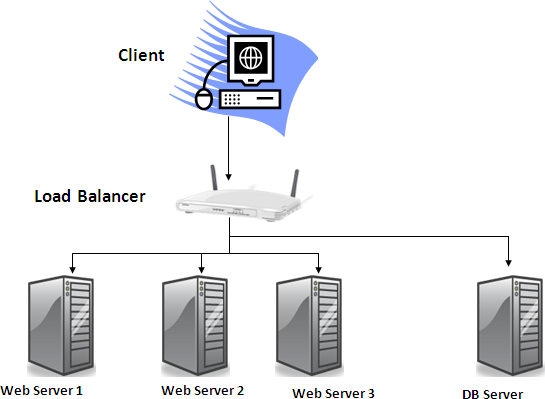1.System is powered on 2.The CMOS loads the BIOS and then runs POST 3.Looks for the MBR on the bootable device 4.Through the MBR the boot sector is located and the BOOTMGR is loaded 5.BOOTMGR looks for active partition 6.BOOTMGR reads the BCD file from the \boot directory on the active partition 7.The BCD (boot configuration database) contains various configuration parameters( this information was previously stored in the boot.ini).bcdedit /export save-bcd GUIDs program objects 8.BOOTMGR transfer control to the Windows Loader (winload.exe) or winresume.exe in case the system was hibernated. 9.Winloader loads drivers that are set to start at boot and then transfers the control to the windows kernel.

Monday, October 01, 2012
Thursday, August 30, 2012
Benefits of virtualization
1.Faster server provisioning
2.Fewer physical servers means lowering monthly power and cooling costs in the data center.
3.Fewer physical servers means less data center floor space required.
4.Increase uptime with vmotion,svmotion,fault tolerance, high availability, and distributed resource scheduling etc
5.Better utilization of computing resources.Multiple apps and OS in single physical server.
6.No hardware dependency.
7.Easy and flexible infrastructure management
Posted by
PKP
at
8/30/2012 11:51:00 PM
0
comments

![]()
Labels: VMware
Friday, August 24, 2012
USB and VMware ESX
USB devices are not supported for ESX 4.0 and below.Use parallel port or Digi International has developed AnywhereUSB Remote I/OConcentrator, which utilizes USB over IP Technology.
ESX 4.1 does support USB controllers.ESX 4.1 supports USB device passthrough- Add USB controller and a USB device.
One virtual USB controller per VM.
Per VM max 20 USB devices.
Posted by
PKP
at
8/24/2012 11:16:00 AM
0
comments

![]()
Labels: VMware
Wednesday, August 22, 2012
Difference between Vmotion and SVmotion
Vmotion - move from one host to other, disk remains same.
SVmotion - move from one disk to other, host remains same.
Posted by
PKP
at
8/22/2012 12:02:00 AM
0
comments

![]()
Labels: VMware
Tuesday, August 21, 2012
Thin provisioning vs Thick provisioning
Thin provisioning - In this format, the size of the VDMK file occupies on the datastore only the size of how much it is used. For example, if you create a 500GB virtual disk, and place 100GB of data in it, the VMDK file will be 100GB in size in the disk.
Thick provisioning - If you create a 500GB virtual disk, and place 100GB of data in it, still the VMDK will appear to be 500 GB at the datastore filesystem, but contains only 100GB of data on disk.
Posted by
PKP
at
8/21/2012 11:57:00 PM
0
comments

![]()
Labels: VMware
Wednesday, August 15, 2012
Citrix interview questions
What all are the versions of Citrix?
2001 MetaFrame XP
2002 MetaFrame XP with Feature Release 1
2002 MetaFrame XP with Feature Release 2
2003 MetaFrame XP Presentation Server, with Feature Release 3
2004 MetaFrame Presentation Server 3.0
2005 Presentation Server 4.0
2007 Presentation Server 4.5
2007 Presentation Server 4.5, with Feature Pack 1
2008 Citrix XenApp
What is the name of Citrix Systems proprietary presentation layer protocol?
Independent Computing Architecture (ICA).
What is the speciality of ICA?
It sends screen updates and mouse movements updates in kb size from client to server.Soo thin communication.
What is the ICA port number?
ICA port number :1494
ICA Protocol on UDP :1604
If Session Reliability is enabled, TCP port 2598 replaces port 1494 as the port that the ICA protocol uses.
What is IMA protocol?
IMA stands for Independent Management Architecture.
It is used for server-to-server communication like licensing, server load updates etc, all which occurs "behind the scenes."
What is Data Collector?
Server which stores dynamic data such as logon info, app usage info etc (zone can be based on geolocation or subnet)
What is the difference between Dynamic Store and Data store?
The data store is a database on disk. The dynamic store is information stored in memory.
How to look the contents of the in-memory "dynamic store" on the data collector?
use “queryds” command
How to determine which server is acting as the data collector in the zone?
run "query farm /zone" from the command line)
What is zone?
It is a grouping of Presentation Servers that shares the common Data Collector.
What is Data Store?
Server which stores static data such as published app,licence info, printers info,form config etc.
What is Farm?
It is a management boundary.All the servers in the farm share a single data store.
Allows to configure features and settings for the entire farm rather than configuring each server individually
What is Local host cache?
If presentation server not connected with data store server, it uses Local host cache.
How to recreate the local host cache file?
dsmaint recreatelhc
What is shadowing?
You can view another user’s session on another device by using shadowing.
Posted by
PKP
at
8/15/2012 01:47:00 AM
0
comments

![]()
Labels: Citrix
Tuesday, May 01, 2012
Windows systems admin Q&A
Posted by
PKP
at
5/01/2012 04:14:00 PM
0
comments

![]()
Labels: Active Directory, How-to, Networking, Servers, Windows
Monday, April 09, 2012
What is Web farm in IIS?
Serving a web site with more than one web server is called web farm.

Posted by
PKP
at
4/09/2012 11:25:00 PM
0
comments

![]()
What is Web garden in IIS?
Every application pool in the IIS will be having a worker process (w3wp.exe).
Posted by
PKP
at
4/09/2012 11:19:00 PM
0
comments

![]()